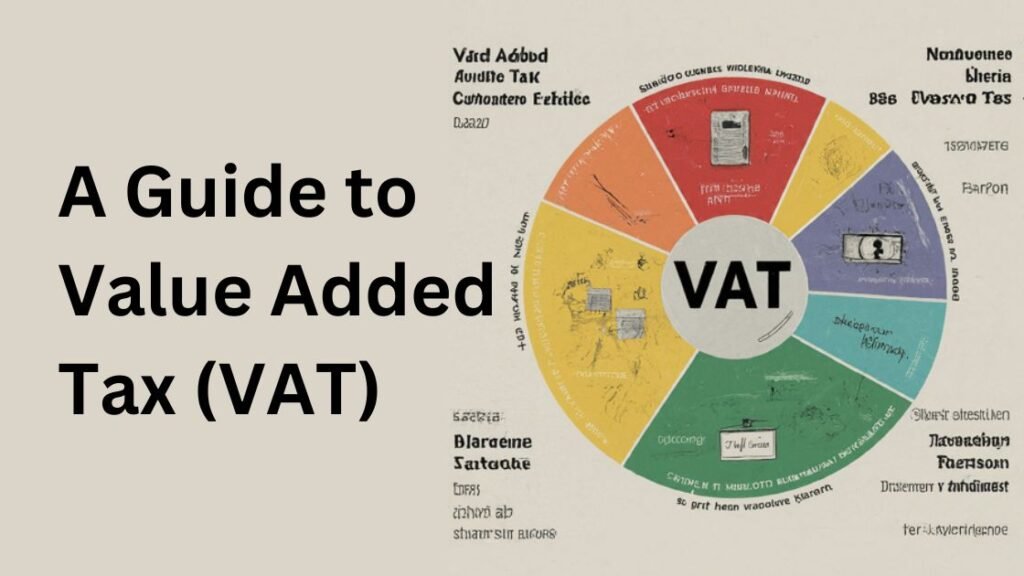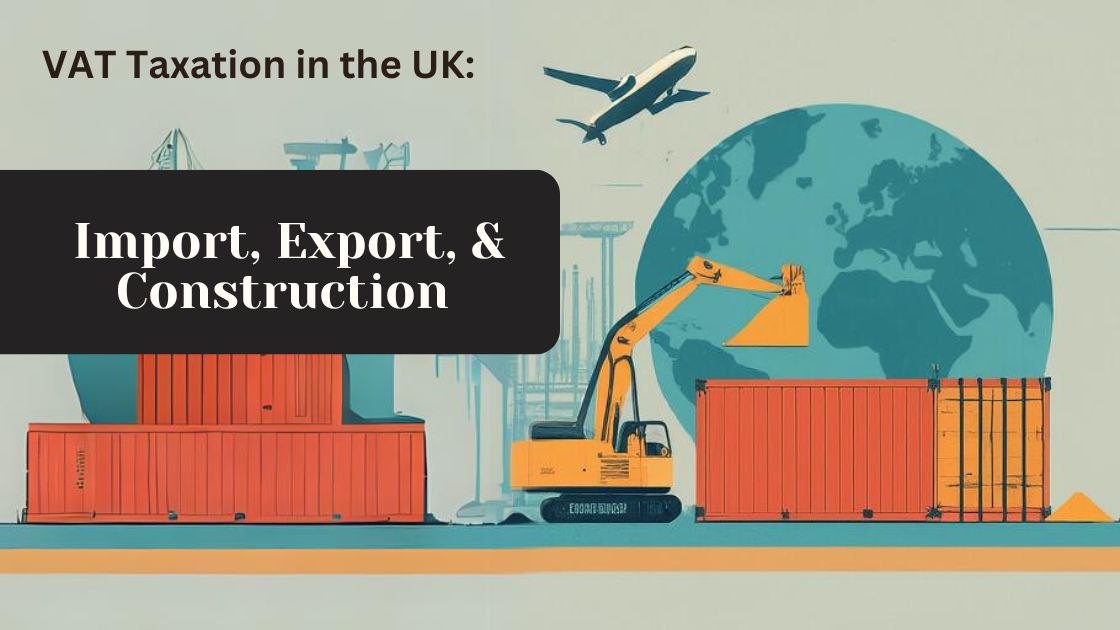Value Added Tax (VAT) is applicable to a wide range of businesses and individuals involved in the supply of goods and services. This guide will give you a deeper understanding on VAT registration thresholds, rates, and rules which may vary depending on factors such as the type of business, the nature of supplies, and the volume of turnover.
What is taxable turnover?
The total sales of goods and services subject to VAT.
VAT Registration Exemption threshold
| Tax Year 2024-25 | £85,000 |
Who must file VAT?
- Businesses with a total taxable turnover for the last 12 months exceeding the VAT registration threshold must register for VAT and file VAT returns.
- Businesses with a taxable turnover below the VAT registration threshold can choose to register for VAT voluntarily.
- Some businesses are required to register for VAT regardless of their turnover. This includes businesses that:
- Receive goods from other EU countries worth over £85,000.
- Expect to exceed the VAT threshold in the next 30 days.
- Take over a business that is already registered for VAT.
- Join a VAT group or division.
- Non-established-taxable-persons (NETPs) must register for VAT if they make any taxable supplies in the UK. NETP is any person who is not normally resident in the UK, does not have a UK establishment and, in the case of a company, is not incorporated in the UK.
Once registered for VAT, businesses must charge VAT on their taxable sales (output tax) and can reclaim VAT on their eligible business purchases (input tax). They must then file VAT returns with HMRC, typically on a quarterly basis, reporting the amount of VAT collected and paid during the reporting period.
What will happen if you do not register for VAT?
Failure to register for VAT when required or to file VAT returns correctly and on time can result in penalties and interest charges from HMRC. The amount of penalties are based on the net VAT due from the time you should’ve registered to the time HMRC received your application or realized you needed to register.
| Situation | Penalty rate |
| If you registered less than 9 months late | 5% |
| If you registered 9-18 months late | 10% |
| If you registered more than 18 months late | 15% |
VAT Compliance Rules to follow:
Once you are registered for VAT, you’ll need to comply with VAT rules, including:
- Charging VAT: You must charge VAT on your sales at the appropriate rate (standard rate, reduced rate, or zero rate), and issue VAT invoices to your customers.
- Claiming VAT: You can reclaim VAT on your business expenses, known as input tax, subject to the usual rules and restrictions.
- Filing VAT Returns: You’ll need to file regular VAT Returns with HMRC, usually on a quarterly basis, even if you have no VAT to pay or reclaim.
- Making Payments: If your VAT taxable turnover exceeds the VAT registration threshold, you’ll need to pay any VAT due to HMRC by the deadline specified on your VAT Return.
If your turnover exceeds the VAT registration threshold, you must notify HMRC within 30 days and register for VAT accordingly.
How to Calculate taxable turnover?
Let’s say you run a small retail business selling clothing. Over the past 12 months, your sales are as follows:
| # | Sale Record | VAT Rate Charged | Total Sale
(including the VAT charged to customer) |
| 1 | Sales of clothing (subject to standard rate VAT) | 20%
(Standard Rate) |
£70,000 |
| 2 | Sales of children’s shoes (subject to reduced rate VAT | 5%
(Reduced Rate) |
£10,000 |
| 3 | Sales of books (subject to zero rate VAT) | 0%
(Zero Rate) |
£5,000 |
| 4 | Exempt sales (not subject to VAT)
e.g., sales of second-hand clothing |
– | £15,000 |
To calculate your taxable turnover, you would add up the total value of your taxable sales subject to VAT:
Total Taxable Turnover = Sales of clothing + Sales of children’s shoes
= £70,000 + £10,000
= £80,000
In this example, your total taxable turnover is £80,000.
What should be done if total taxable turnover is above VAT registration threshold (£85,000)?
Let’s assume your total taxable turnover is £100,000.
With a total taxable turnover of £100,000, you’ll need to calculate the total VAT collected on your sales. This is done by applying the appropriate VAT rate to your taxable turnover.
Total VAT Collected = Total Taxable Turnover × VAT Rate
Assuming all your sales are subject to the standard rate of VAT (20%), the total VAT collected would be:
Total VAT Collected = £100,000 × 0.20 = £20,000
You’ll be required to pay the HMRC, the total VAT collected, deducting any VAT you’ve paid on your business expenses (input tax) by the deadline specified on your VAT return.
Let’s suppose you incurred £25,000 in business expenses, on which you paid £4,100 VAT.
You need to pay net VAT liability to the HMRC, which is:
Net VAT Liability = Total VAT collected via sales – Total VAT paid on business expenses
Or = Output VAT – Input VAT
= £20,000 – £4,100
= £15,900
So, the total tax to paid to the HMRC for the above scenario is £15,900. In layman’s term, if your input tax is less than your output tax, you’ll need to pay the difference to HMRC. If your input tax exceeds your output tax, you may be eligible for a VAT refund.
Review Exempt and Non-Taxable Supplies: Remember that certain supplies, such as certain financial services, insurance, and exempt sales, are not included in your taxable turnover for VAT registration purposes. Make sure to exclude these from your calculations.
In addition to VAT, you’ll also need to consider other taxes such as income tax and National Insurance contributions on your business profits, depending on your business structure and personal circumstances.
What should I do, if I am registered as VAT, I am charging VAT to the customer and the net revenue is less than the VAT registration threshold (£85,000)?
If you voluntarily register for VAT and your net revenue is below the VAT registration threshold, you are still subject to VAT obligations.
- You won’t be required to pay VAT to HMRC unless your VAT taxable turnover exceeds the registration threshold and,
- you must remit the collected VAT to HMRC, regardless of whether your turnover exceeds the threshold.
Example:
Let’s suppose you run a small business and is registered for VAT. Every quarter you collect VAT from the customers on sales transactions and your total taxable amount is £50,000. In a quarter, you collected £5,000 VAT from the customers. Then you are required to file VAT returns with HMRC, report the VAT collected from the customers and pay this amount (£5,000) to HMRC. You must pay Net VAT liability amount to HMRC, deducting the amount incurred on the business expenses.
Who should Deregister from VAT?
If the total taxable turnover falls below the deregistration threshold (£83,000), then one may consider deregistering for VAT with HMRC. This would relieve them from the administrative burden of VAT compliance, but you must ensure that you meet the criteria for deregistration.
You should maintain accurate records of her sales, purchases, and VAT transactions to ensure compliance with VAT regulations and facilitate the preparation of VAT returns.
What is the deadline for submitting a VAT Return?
The deadline for submitting a VAT return and paying any VAT due to HMRC depends on the VAT accounting period chosen by the business. In general, the deadline for submitting a VAT return and paying VAT is usually one month and seven days after the end of the VAT accounting period.
For example:
If a business has a quarterly VAT accounting period ending on 31st March, the deadline for submitting the VAT return and paying any VAT due would typically be 7th May.
What you should do if you become insolvent, i.e., insufficient to pay VAT?
Insolvency in the context of VAT refers to a situation where a business is unable to pay its VAT liabilities to HM Revenue & Customs (HMRC) due to financial difficulties or an inability to meet its financial obligations.
You should cancel your VAT registration and organise payment of your outstanding VAT to HMRC.
- Businesses can engage in discussions with HMRC to negotiate payment plans or arrangements to settle outstanding VAT liabilities. HMRC may be willing to agree to a time-to-pay arrangement or offer other solutions to help the business manage its VAT debts.
- Businesses may be eligible for government support schemes or initiatives designed to assist struggling businesses, such as grants, loans, or tax relief measures. It’s advisable to research and explore available support options that may help alleviate financial difficulties.
HMRC may take action to recover unpaid VAT from an insolvent business through various means, such as issuing demands for payment, pursuing legal action, or appointing a liquidator or administrator to collect assets and settle debts. HMRC may impose penalties and interest charges on the outstanding amounts. These additional charges can exacerbate the financial burden on an insolvent business.
VAT debts must be settled before other creditors can receive payments from the insolvent estate.
You’re still responsible for your VAT if you:
- are declared bankrupt and continue to trade.
- set up a voluntary arrangement to pay off your debts (sometimes known as a ‘trust deed’ in Scotland)
If you set up a voluntary arrangement, HMRC will send you 2 paper VAT Returns. These are for the following periods:
- your current VAT period up to the day before the arrangement
- the date of the arrangement up to the end of your next VAT period
After this, you can continue to use your online VAT account to send your VAT Returns.






